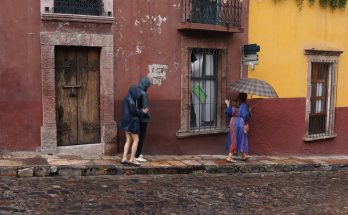By Josemaria Moreno
Our city has once again been nominated as the best tourist destination by Condé Nast Travel magazine. Voting is open until June, and anyone can vote at this link: https://www.cntraveler.com/story/vote-readers-choice-awards
But what are these awards and what criteria do they measure?
Condé Nast magazine is part of a transnational editorial consortium that includes some highly renowned and impactful publications such as GQ, Vogue, and Wired, among others. Every year they conduct this survey to evaluate and vote for the best tourist destinations around the planet in addition to other voting such as for the best hotels, trains, spas, restaurants, and so forth. This year, at the regional level, we compete with our neighbor the capital of Guanajuato.
The criteria to evaluate are the following: places of interest and geography, art and culture, regional cuisine and culinary options, friendliness, transportation (how easy it is to move around the city by public transportation, taxi, train, bike), shopping, outdoor activities, accessibility, and hotels.
But are these criteria a realistic standard that adequately frames the reality of San Miguel de Allende? To begin with, it should be noted that Condé Nast obviously has a well-identified tourist market: travelers with high and exclusive purchasing power. It is essential to point out the positive and negative points involved in attracting this type of tourism to San Miguel.
It is impossible to make a clear and distinct breakdown of the positive and negative points under discussion here. Rather, we have a melting pot of potentials and absurdities that affect each other. Our city, for a couple of decades now, has followed a gentrification trend like perhaps no other city in our country. The dozens of art galleries, specialized cuisine restaurants, grand tourism hotels, and an excessive real estate market imply exorbitant rents, segregation, and housing displacement of the labor force to the peripheries of town. Many of these areas lack basic services, facilities, and security. However, a city like San Miguel, devoid of any kind of economy that is not directly supported by the service industry, is entirely dependent on this gentrification trend.
The issue is thorny, but the government and the private sector must plan in the future to make San Miguel a more inclusive place. Not only for the tourists but also for its workforce. Otherwise, our city will lose its charm and become just another tourist trap. San Miguel has a unique history in its relationship between natives and foreigners that made it one of the most attractive and peculiar places in the Bajío. But neither the government nor the private sector should forget the people who keep this city working and growing. It is a symbiotic relationship that lately has opted to give preference to some over others.
As a minimal step forward, I invite you to vote objectively and critically in the Condé Nast survey.




